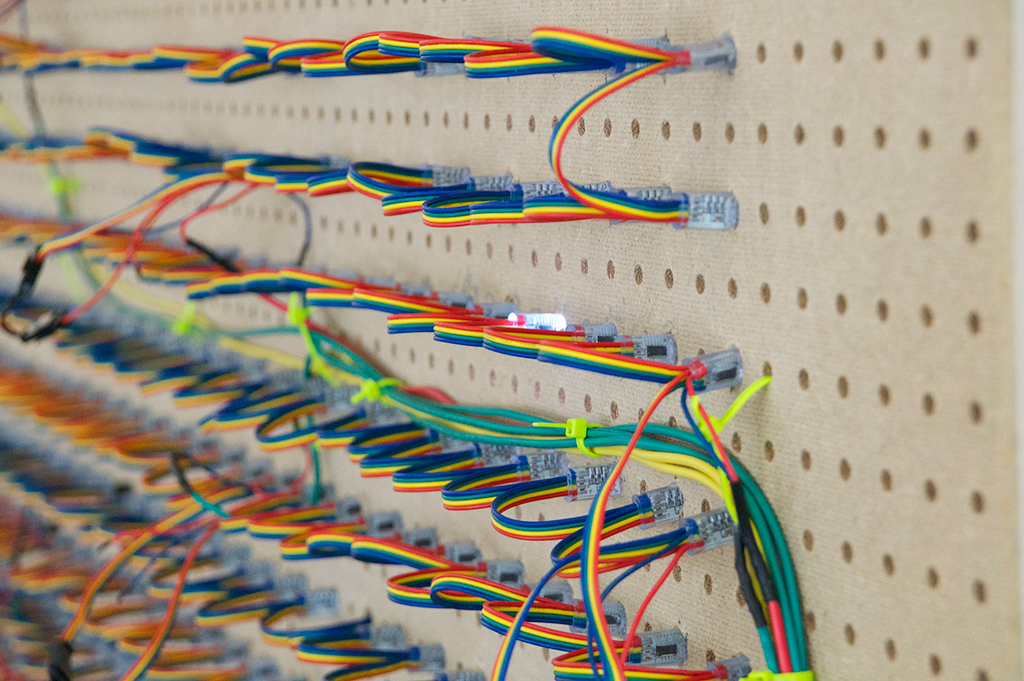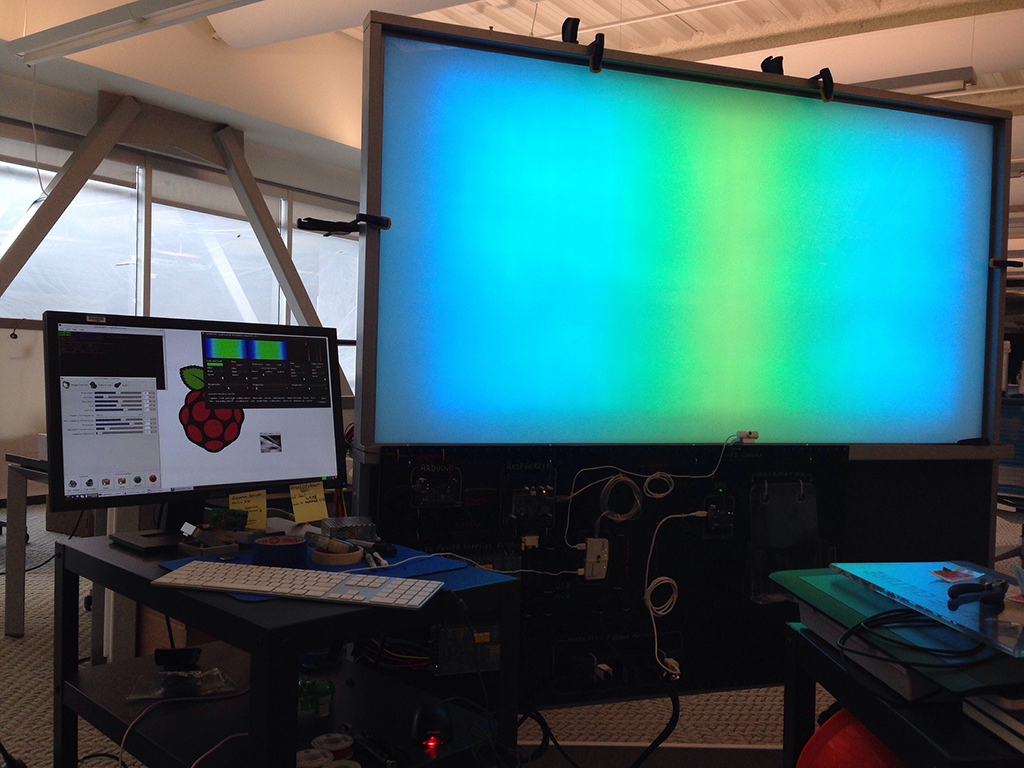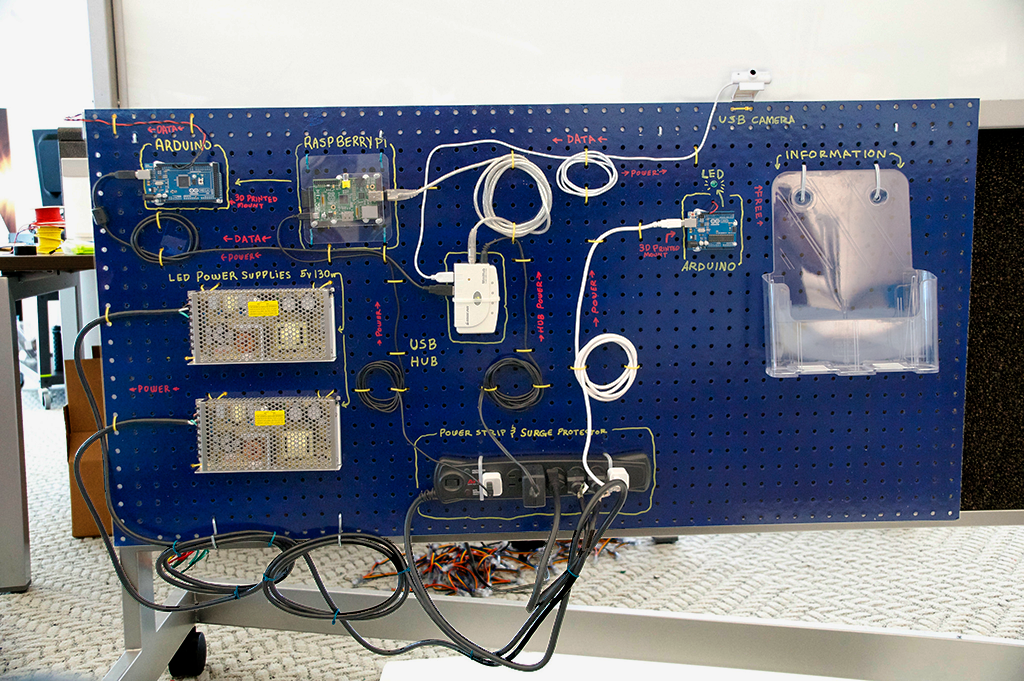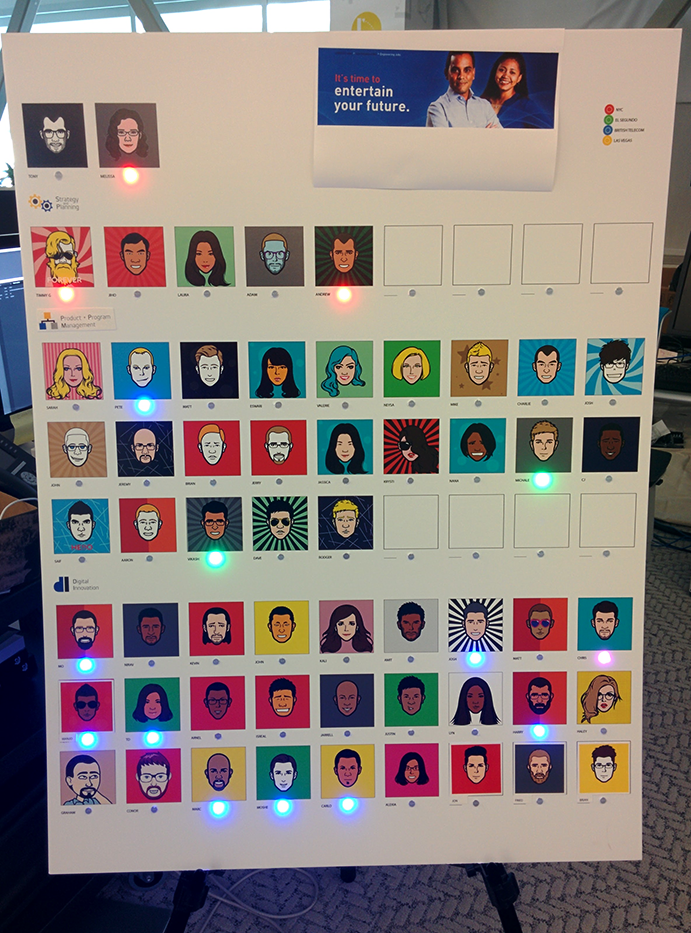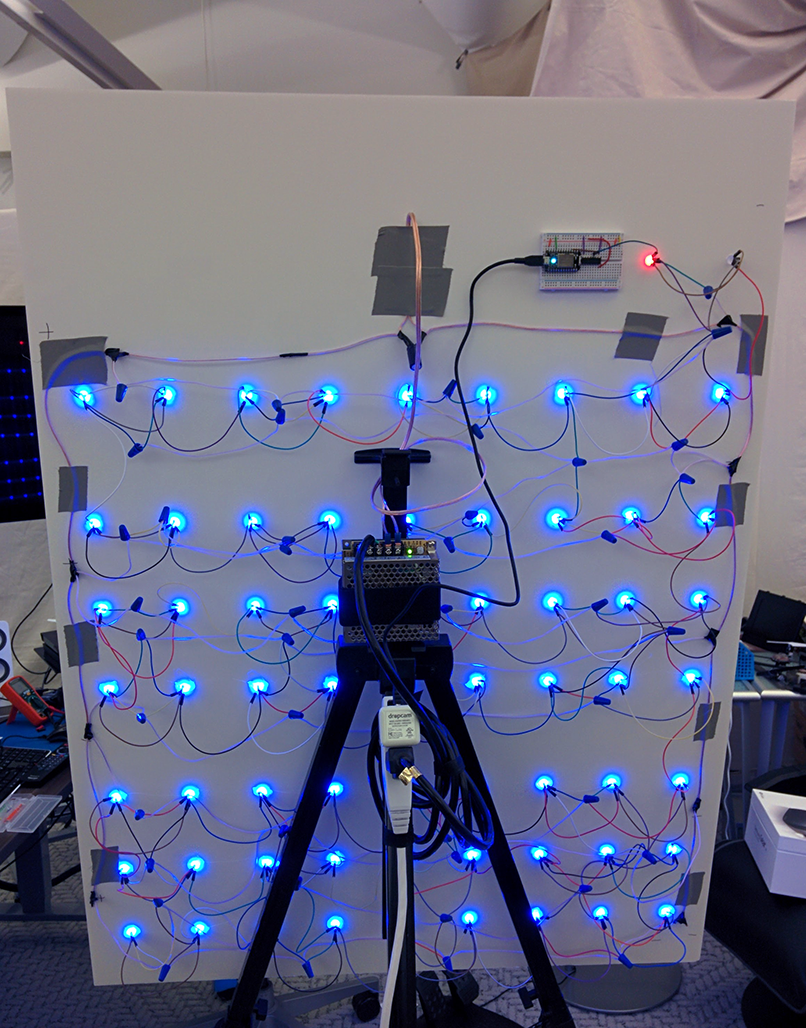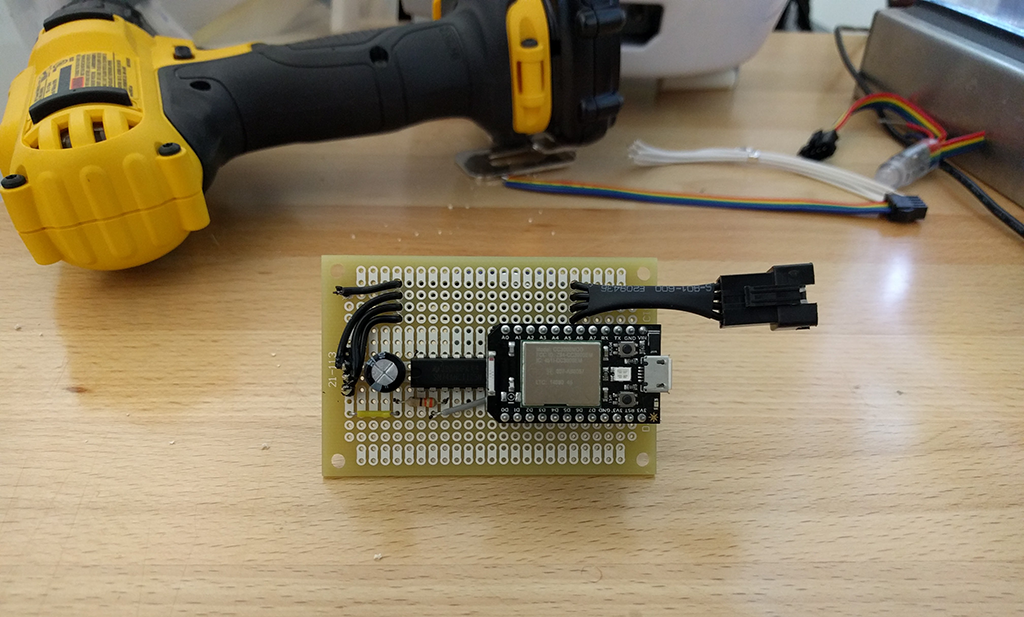LED Projects
LED Wall
In the early days of DLab, we had a plan to start a community of makers, hackers and interested types within DIRECTV to build a sort of grassroots culture of innovation. To support the idea, I was asked to create a flashy yet inexpensive, hacked-together project to present at the next open house, to attract the kind of people we were looking for.
I decided on a handmade LED wall, it had been something I’d been thinking about doing for a while. To drive it, I chose a Raspberry Pi running an open source software called Glediator, and an Arduino Mega to handle communications with the pixels.
That this was my first time working with RGB LEDs and with the Raspberry Pi meant there would be a few hiccups, but it was all part of the experience, and the bonus was a ton of new know-how. I added a webcam, wired it all for power with the exposed guts on a board along with our handouts, and the LED wall was done and ready on time to play its part as the entrance exhibit for the open house.
Presence Board
Dlab was a part of an organization within DIRECTV called DEPG. We were a pretty tight-knit team, but knowing where everyone might be on a given day was difficult. There were offices on two different campuses in El Segundo, an office in New York, and the regular flow of offsite visits to places like Las Vegas for events.
We had been working on some ideas around IoT and geo-fencing applications at the time, so I decided to put together a board that would communicate with team members’ phones to figure out where they were, and let the rest of the team know. These boards could be installed at the three office locations, and it would be a fun and visual way of keeping track of each other. In addition, it was a fun way to demonstrate IoT applications to the team.
This was a quick non-critical project, so I decided to utilize existing utilities when possible. I build the board out of a bunch of individual RGB LEDs, hooked up to a Particle Core, a wifi enabled Arduino compatible board. Particle offers a cloud for the the data, and connections to services like IFTTT, a web-based service for connecting rules for connecting different hardware and services, which I chose as the client to install on everyone’s phones.
After setting up a series of rules in IFTTT, a signal would be sent to the Particle Cloud when a team member entered or left a geo-fenced area. That would update the Particle Core’s data display, and change the lights to the correct values.
It worked, most of the time.
But the real lesson here is how difficult it is to get a large group of people to volunteer to install software that would constantly track them. Not terribly popular, this one…
Helmet PROP
My team took on a challenge from our associates at Samsung to create a short film with a few requirements. It had to be done:
1) In VR
2) Using Samsung consumer products
3) For under $500, and in just a few weeks.
Matt Rasamoto, my friend, manager and overall super talented dude, wrote a script and planned the short, Agoraphobia, a science fiction thriller about an astronaut on a doomed mission to a distant planet.
The movie probably deserves its own write up, but suffice it to say, one of the shots called for a helmet with white lights that suddenly started blinking red. I grabbed a Particle Photon and got to work. Using Blynk, a smartphone based GUI for IoT, I was able to quickly create a remote and an in-helmet set of LEDs that could be fired off on command from a smartphone.
Not a particularly robust solution, but it was quick and dirty, and it got the job done.

